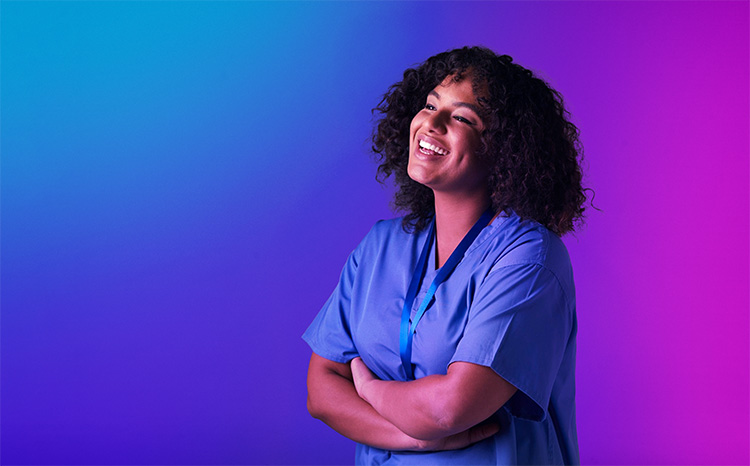Horrible history part two: things fall apart
- 13 June 2012

As the song says: “It ain’t what you do, it’s the way that you do it. That’s what gets results.” Or not, in the case of the National Programme for IT in the NHS.
Ten years ago this week, the then-Labour government published the IT strategy that launched NPfIT – ‘Delivering 21st century IT support for the NHS: national strategic programme.’
The strategy set out a vision that was very similar to that outlined by ‘Information for Health’ four years earlier – and that is very similar to the vision of the ‘Power of Information’ strategy published last month.
But it set out a very different delivery mechanism. Where IfH talked about national strategy and local implementation, ‘Delivering 21st century IT’ was based on “ruthless standardisation” and national contracts.
The strategy said that a new, NHS IT programme director would be appointed with a remit to specify core, national systems and to shake-up procurement by contracting “consortia of suppliers” to do the work.
Then strategic health authorities would appoint chief information officers to make sure that primary care and acute trusts deployed the systems provided.
Enter Richard Granger
The programme got off to a flying start. By September 2002, Richard Granger had been appointed as director general of NHS IT. Granger was a former Deloitte Consulting partner who had successfully headed up London’s congestion charge team.
He held meetings with suppliers at which he told them, reportedly in words of four letters, exactly what he thought of their systems.
But he also set about getting contracts in place for a national ‘data spine’ or NHS broadband infrastructure plus key services, such as the Personal Demographics Service, on which e-prescriptions, e-booking, and “lifelong” health records could be built.
At the same time, England was split into five ‘clusters’, for which local service providers were to be appointed. The LSPs, in turn, were to contract with major systems providers and then deploy their IT to trusts.
Granger wanted the contracts in place by the end of 2003. Indeed, he threatened to “cancel Christmas” if they were not.
Fortunately for NHS IT staff and suppliers who wanted to celebrate, all bar one of the £6.2 billion worth of contracts had been placed by then, with the final LSP deal, for the South, being placed in January 2004.
Granger promised that “the programme will now shift its focus to ensuring the delivery of high quality services to a challenging timetable.” The following year, an agency, NHS Connecting for Health, was set up to do the job.
Tensions emerge
‘Delivering 21st century IT’ itself admitted that it would be a “challenge” to match national developments to the ability of suppliers to deploy at a national level and to staff acceptance of new systems and ways of working. After 2004, the challenge steadily increased; or the programme’s ability to meet it declined.
BT won the ‘national application service provider’ contract for the data spine, and the national projects started work, with the lifelong record morphing into the NHS Summary Care Record.
But while BT delivered the new NHS network – or N3 – on time (and subsequently upgraded it), the SCR ran into a huge row with the BMA and privacy campaigners about consent and confidentiality.
This rumbled on for so many years that the SCR is still far from being completely rolled out – and the patient viewer and health organiser, HealthSpace, was killed off by the ‘Power of Information’ review.
More seriously, as critics voiced ever louder criticism of the programme’s principles and approach, the schedule against which LSPs were supposed to deliver detailed care records to healthcare communities started to slip.
LSPs quit and schedules slip
BT ‘reset’ its LSP contract for London as early as 2005, so it could deliver ‘interim’ systems while working on Cerner Millennium.
Eventually, it adopted a ‘best of breed’ approach in the capital, leaving GPs with their existing systems and offering RiO to mental health trusts, while persisting with Millennium in the acute sector.
Despite this, the first trusts to go-live with Millennium suffered major problems, and its deployment is still not complete among those trusts that have said they want it.
Accenture exited its LSP contract for parts of the North, Midlands and East in 2006, leaving CSC in charge of all three clusters.
CSC deployed TPP’s SystmOne to GP practices and installed ‘interim’ solutions at many acute and mental health trusts. But it has struggled to complete Lorenzo, the ‘strategic’ system developed by iSoft (which it bought last year).
As of today, CSC has managed to deploy Lorenzo to just four significant ‘early adopters’ – a community service that will probably switch it off, two acute trusts, and a mental health trust that went live a fortnight ago.
Finally, the last LSP to be appointed, Fujitsu, left its LSP deal for the South in May 2008. After a considerable delay, BT took over the ‘live’ sites to which it had deployed a basic version of Millennium.
BT upgraded them to the ‘London’ version and deployed Millennium to a further three ‘greenfield’ sites. It also delivered RiO to a significant number of mental health trusts. But most acute trusts in the South have received nothing.
So good they abolished it twice
As the programme struggled, the Department of Health’s commitment to its approach declined. In 2006, in a neatly Orwellian touch, it announced a ‘national local ownership programme’ to give SHAs much more responsibility for shaping and delivering NHS IT requirements.
Then, after Richard Granger completed an extended “transition” out of his post in 2008, Matthew Swindells, the chief executive of Royal County Hospital NHS Trust and a ministerial advisor, was brought in to carry out a review.
This urged trusts to focus on creating a “tipping point” in demand for strategic IT systems, by focusing on what became known as the Clinical 5 – a patient administration system, order comms, discharge letters, scheduling and e-prescribing.
Christine Connelly, who succeeded Swindells as NHS chief information officer, went further. She talked about recasting the national elements of the programme and creating an “app store” for the NHS (which became the interoperability toolkit).
She promised a new “connect all” approach, in which there would be more choice for trusts and “multiple systems in different places” as a result of that choice. And at the end of its term in government, Labour lopped £500m off the nominal cost of the programme.
Despite this, it remained an irresistible target for media pundits and politicians. In opposition, Prime Minister David Cameron dubbed the project the “NHS supercomputer”; in government, his health ministers abolished it not once but twice.
In September 2010, Simon Burns announced that £700m would be cut from NPfIT, that the oversight of national projects would move from CfH to “new arrangements” by 2012, and that trusts would be allowed to choose from “a more plural system of IT and other suppliers.”
A year later, following a scathing report from the National Audit Office, and an even more scathing investigation by the Commons’ public accounts committee into what the programme had delivered by way of health records and into what the NHS had paid for them, Burns did the same again.
The zombie NPfIT
Yet, as EHI editor Jon Hoeksma noted at the time, NPfIT continues to have a kind of zombie existence. After more than 18 months of drafting, ‘The Power of Information’ failed to explain what will happen to CfH, or will be responsible for infrastructure, standards and national projects in the future.
CSC has been locked in negotiations over a new LSP deal for the NME for well over a year. A deal that would have delivered what the government called “savings” of £1 billion on its £3 billion contract looked close this spring. But a ‘standstill agreement’ between CSC and the DH was recently extended to 31 August.
Trusts in the South that were not covered by the BT deal were promised a systems procurement using the Additional Supply Capability and Capacity framework. But this collapsed at the end of December 2011, after almost two years of effort.
These trusts have yet to hear whether an alternative way to deliver national support and funding will be found. But then, amazingly, the £700m of legal action triggered by Fujitsu’s departure has yet to be resolved.
And, of course, the vision of ‘Delivering 21st century IT’ has not been delivered. The patient experience of the NHS has not been transformed by technology, health staff continue to lack universal access to sophisticated health records, data for commissioning and research remains hard to gather and analyse.
‘The Power of Information’ did not make the mistake that ‘Delivering 21st century IT’ made of drawing up a national plan to try and impose its vision on local NHS organisations.
On the other hand, it said virtually nothing about how its remarkably similar ten year vision for NHS IT would be achieved. So the question may be: will no plan succeed where the ‘national strategic programme’ failed to get results?





